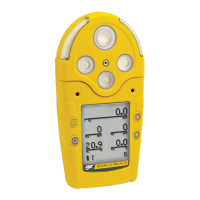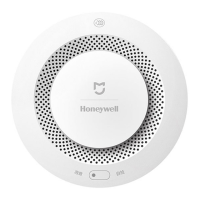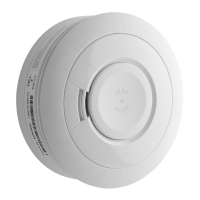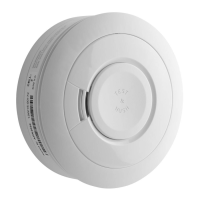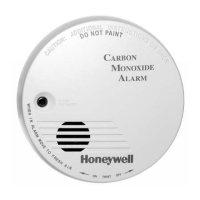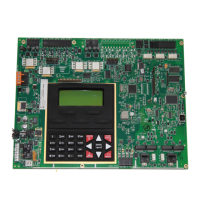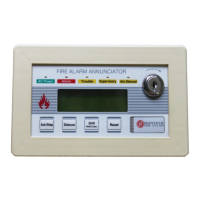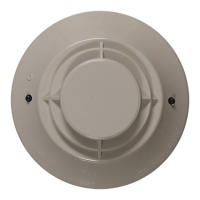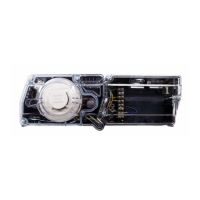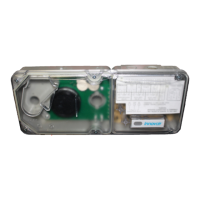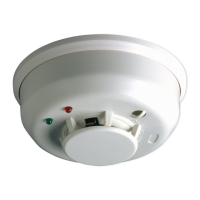9000-0447 Rev. I
iv
Installation Precautions
Adherence to the following will aid in problem-free installation with long-term reliability:
WARNING - Several different sources of
power can be connected to the fire alarm
control panel. Disconnect all sources of power
before servicing. Control unit and associated
equipment may be damaged by removing and/or
inserting cards, modules, or interconnecting
cables while the unit is energized. Do not attempt
to install, service, or operate this unit until
manuals are read and understood.
CAUTION - System Re-acceptance Test after
Software Changes: To ensure proper system
operation, this product must be tested in
accordance with NFPA 72 after any programming
operation or change in site-specific software. Re-
acceptance testing is required after any change,
addition or deletion of system components, or
after any modification, repair or adjustment to
system hardware or wiring. All components,
circuits, system operations, or software functions
known to be affected by a change must be 100%
tested. In addition, to ensure that other
operations are not inadvertently affected, at least
10% of initiating devices that are not directly
affected by the change, up to a maximum of 50
devices, must also be tested and proper system
operation verified. Equipment used in the system
may not be technically compatible with the
control panel. It is essential to use only
equipment Listed for service with this control
panel.
This system meets Underwriter’s Laboratories
requirements for operation at 0-49º C/32-120º F
and at a relative humidity (non condensing) of
85% at 30°C (86°F) per NFPA, and 93% ± 2% at
32°C ± 2°C (89.6°F ± 1.1°F) per UL 93% ± 2%
RH (non-condensing) at 32°C ± 2°C (90°F ± 3°F).
However, the useful life of the system's standby
batteries and the electronic components may be
adversely affected by extreme temperature
ranges and humidity. Therefore, it is
recommended that this system and its
peripherals be installed in an environment with a
normal room temperature of 15-27º C/60-80º F.
Verify that wire sizes are adequate for all
initiating and indicating device loops. Most
devices cannot tolerate more than a 10% I.R.
drop from the specified device voltage.
Like all solid state electronic devices, this
system may operate erratically or can be
damaged when subjected to lightening induced
transients. Although no system is completely
immune from lightening transients and
interference, proper grounding will reduce
susceptibility. Overhead or outside aerial wiring is
not recommended, due to an increased
susceptibility to nearby lightening strikes. Consult
with the Technical Services Department if any
problems are anticipated or encountered.
Disconnect AC power and batteries prior to
removing or inserting circuit boards. Failure to do
so can damage circuits.
Remove all electronic assemblies prior to any
drilling, filing, reaming, or punching of the
enclosure. When possible, make all cable entries
from the sides or rear. Before making
modifications, verify that they will not interfere
with battery, transformer, or printed circuit board
location.
Do not tighten screw terminals more than 9 in-
lbs. Over-tightening may damage threads,
resulting in reduced terminal contact pressure
and difficulty with screw terminal removal.
This system contains static-sensitive
components. Always ground yourself with a
proper wrist strap before handling any circuits so
that static charges are removed from the body.
Use static suppressive packaging to protect
electronic assemblies removed from the unit.
Follow the instructions in the installation,
operating, and programming manuals. These
instructions must be followed to avoid damage to
the control panel and associated equipment.
FACP operation and reliability depend upon
proper installation.
Precau-D1-9-2005
FCC Warning: This equipment generates, uses, and can radiate radio frequency energy and, if not installed and used in
accordance with the instruction manual, may cause interference to radio communications. It has been tested and found
to comply with the limits for Class A computing device pursuant to Subpart B of Part 15 of FCC Rules, which is designed
to provide reasonable protection against such interference when operated in a commercial environment. Operation of
this equipment in a residential area is likely to cause interference, in which case the user will be required to correct the
interference at the user’s expense.
If these instructions are not clear, or if additional information or clarification is needed, please consult your local
authorized Gamewell-FCI distributor.
Because of design changes and product improvements, the information in this manual is subject to change without
notice. Gamewell-FCI reserves the right to change hardware and/or software design, which may subsequently affect the
contents of this manual. Gamewell-FCI assumes no responsibility for any errors that may appear in this manual. Neither
this manual nor any part of it may be reproduced without the advance written permission of Gamewell-FCI.
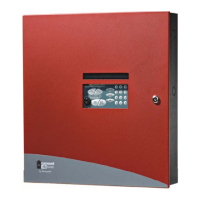
